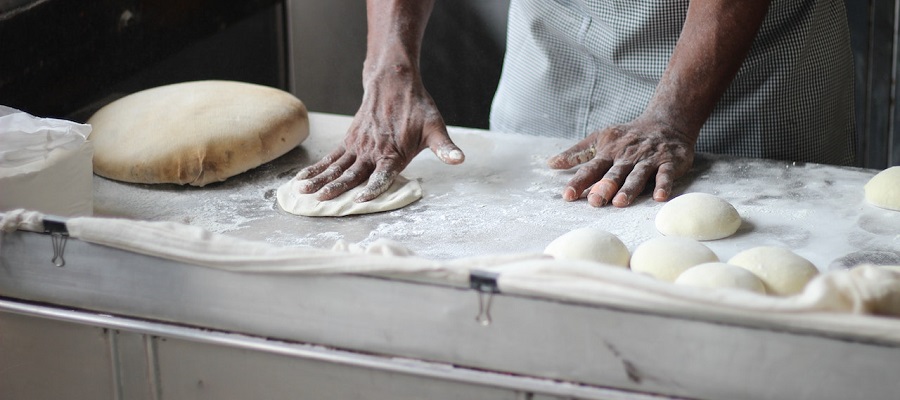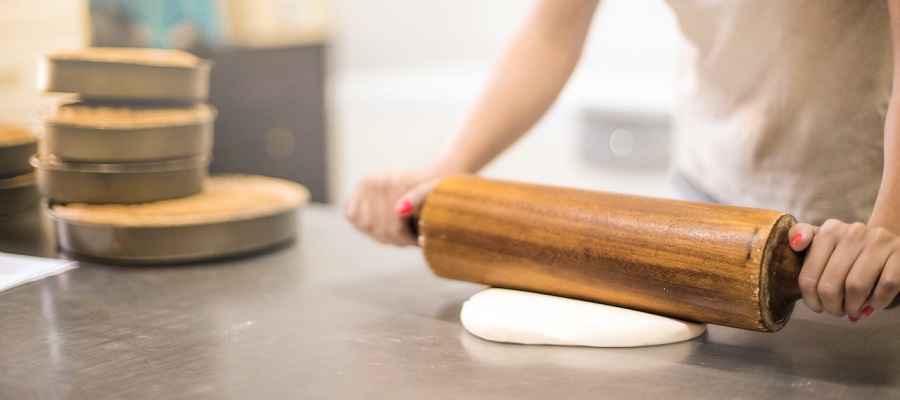Gluten-free flour is a type of flour that is made from grains or other plant-based materials that do not contain gluten, a protein found in wheat, barley, and rye. Gluten-free flour is used as a substitute for wheat flour in recipes for people who have celiac disease, a condition that causes an immune reaction to gluten, or for those who follow a gluten-free diet for other reasons.
There are many different types of gluten-free flours available, including flours made from grains such as rice, corn, and oats, as well as flours made from beans, nuts, and seeds. Some common types of gluten-free flours include:
-
Rice flour: Made from finely ground rice, this flour has a light, subtle flavor and can be used as a substitute for wheat flour in many recipes.
-
Corn flour: Made from finely ground cornmeal, this flour has a slightly sweet and nutty flavor and can be used to make cornbread, tortillas, and other dishes.
-
Oat flour: Made from finely ground oats, this flour has a mild, slightly sweet flavor and can be used in a variety of recipes, including baked goods.
-
Almond flour: Made from finely ground almonds, this flour has a nutty flavor and is often used in gluten-free baking as a substitute for wheat flour.
-
Chickpea flour: Made from ground chickpeas, this flour has a slightly nutty and earthy flavor and can be used in a variety of dishes, including pancakes and flatbreads.
It's important to note that gluten-free flours may behave differently than wheat flour in recipes, and may require the use of additional ingredients such as xanthan gum or psyllium husk to help improve the texture and structure of the final product. It may also be necessary to experiment with different ratios of gluten-free flours to find the right combination for your specific recipe.
What dishes can I prepare with gluten-free flour?
Gluten-free flour can be used in a variety of dishes, including:
-
Baked goods: Gluten-free flour can be used to make a wide range of baked goods, including bread, cakes, cookies, muffins, and more.
-
Pancakes and waffles: Gluten-free flour can be used to make pancakes and waffles, providing structure and helping them to rise.
-
Pasta: Gluten-free flour can be used to make pasta, providing structure and helping the pasta to hold its shape.
-
Flatbreads: Gluten-free flour can be used to make flatbreads such as naan, providing structure and helping the dough to rise.
-
Pizza dough: Gluten-free flour can be used to make pizza dough, providing structure and helping the dough to hold its shape.
-
Coatings for frying: Gluten-free flour can be used to coat foods before frying, creating a crispy exterior.
In addition to these dishes, gluten-free flour can also be used as a thickening agent in sauces, soups, and other dishes. Overall, gluten-free flour is a versatile ingredient that can be used in many different dishes, making it a useful option for those following a gluten-free diet.
Is gluten-free flour healthier than regular flour?
There is no inherent health benefit to using gluten-free flour instead of regular flour for people who do not have celiac disease or a sensitivity to gluten. Both types of flour are made from grains or other plant-based materials and are sources of carbohydrates and other nutrients.
However, for individuals who have celiac disease or a gluten intolerance, gluten-free flour can be a necessary part of a healthy diet. Gluten is a protein found in wheat, barley, and rye, and it can cause an immune reaction in people with celiac disease, leading to damage to the small intestine and other health problems. For these individuals, avoiding gluten is essential for maintaining good health.
In terms of overall nutrition, it is generally recommended to choose whole grain flours whenever possible due to their higher fiber and nutrient content. Whole grain flours have been shown to have a number of health benefits, including helping to reduce the risk of heart disease, diabetes, and certain types of cancer. Gluten-free flours made from whole grains, such as brown rice flour or oat flour, can be a good source of fiber and other nutrients.
It's also important to pay attention to the overall nutrition content of the foods that you are making with gluten-free flour, such as the amount of added sugars and unhealthy fats. As with any type of flour, it is important to consume gluten-free flour in moderation as part of a balanced diet that includes a variety of whole grains, fruits, vegetables, and other nutrient-rich foods.


